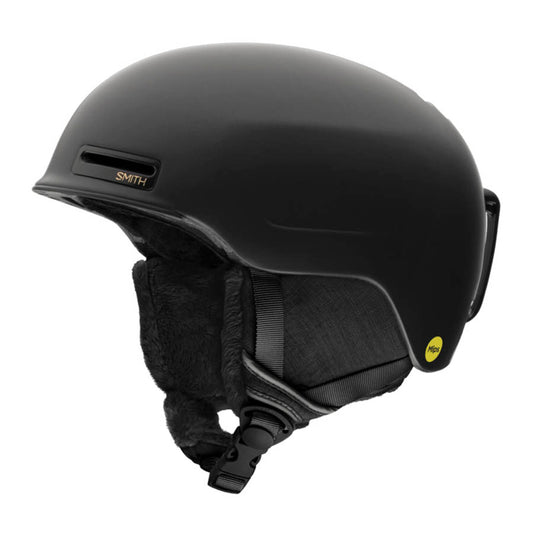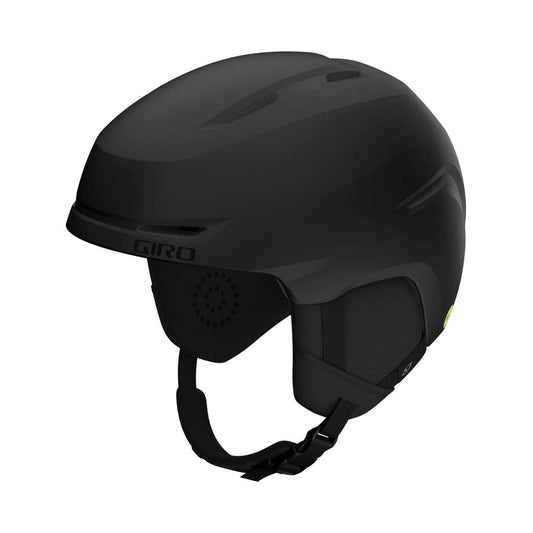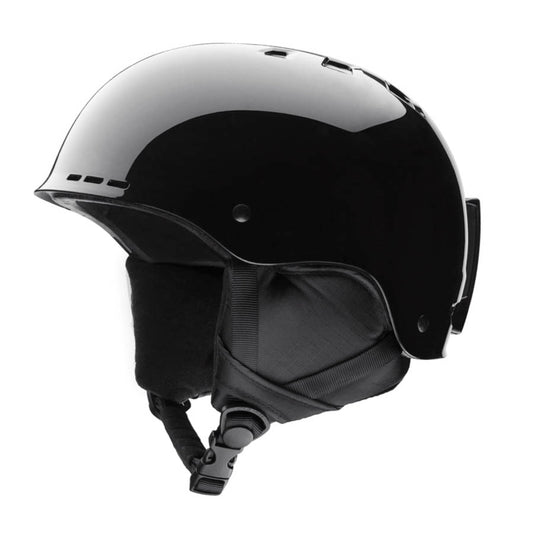In today’s world of skiing, wearing a helmet is no longer considered a “touchy subject”. In fact, it is more uncommon to see someone riding without one than it is to see someone with one. Skiers of all skiing ability levels are wearing them now because not only do they reduce the likelihood of injury for the person who takes a spill, but they also protect anyone that skier may unfortunately collide with in the event of a crash. In this guide we will run you through some of the key elements of ski helmets from fit, to ventilation, to construction, and more. Some of these elements of ski helmets are not filterable on our site, but they are important items to be aware of so you know what you’re getting. These items include shell type, shell construction, types of helmet ventilation, and the safety certifications you will come across.

| Mens | Womens | Kids |
| When you’re shopping for helmets the gender may seem relatively self-explanatory, and for the most part you would be correct. However, there are some noteworthy items to be aware of, particularly with mens and womens helmets. Most men’s helmets can be classified as “unisex” and can therefore be used by men or women provided that the fit is proper. Most of the styling, construction, and extra features that you will read about in this guide are found across men’s helmets. | For women, as is the case with other key ski gear items (skis, ski boots, etc.) many manufacturers make helmets specifically designed with women in mind. In the category of helmets some of the variances that you will find between the men’s and women’s models is with the color and the materials used in the liners. Many brands will make the same model but offer different color options for ladies or they may use furry or fluffy type fleece in the lining or ear pieces for that added bit of style and comfort. | For kids you do not need to worry so much about whether a helmet is for boys or girls. All are designed for boys and girls, whether the aesthetic of the helmets is geared towards one or the other. The key consideration for you is whether it fits properly or not. After that you can begin to consider color and the fun characteristics that many kids helmets come with. Some offer some fun and cool graphics, others have more bold or electric colors, and some may even have some more eccentric features like a mohawk across the top. |

Half Shell: The most common and most popular style of helmet is the Half Shell. The Half Shell style helmet has a hard shell helmet with soft ear pads on the sides. The pads and the liner of the helmet is usually removable so it can be washed.
Full Shell: Most common among race skiers, Full Shell style helmets have a full hard shell that extends over the ears. For racing league skiers, Full Shell helmets can also be modified to add a jaw guard via the included screw holes.
Full Face: The full gambit that includes a full shell design but also includes a visor and chin guard. This style of helmet, while offering supreme protection, isn’t that common for rec skiers and is most often found among competitive event riders.
In-Mold shell construction helmets use a thin, hard plastic outer shell that is similar to the style of helmet you would find in a bike helmet. EPS foam material is used to absorb impact during a crash. Also, it is very lightweight.
Building on the construction of elements of an In-Mold shell, Semi-Hard shell constructed helmets have a fully enclosed outer shell. During impact it is less likely to experience penetration. It also utilizes EPS foam material to absorb impact during a crash.
Uses a thick, tough ABS plastic shell that is formed and glued to hard foam interior and liner. Good protection that is still budget conscious.
Very tough, ABS plastic shell, similar to Hard Shell, but the reinforced material makes it ideal for use in multiple sports.
A combo package of Hard Shell and In-Mold construction. Taking the design of In-Mold helmets but including ABS plastics in important, high-impact spots to increase safety.

This is the European standard that all helmets must meet or exceed in order to be sold in European markets.
The standard that all helmets must meet or exceed to be sold in the United States. It is not uncommon to find helmets that meet both CE and ASTM standards.

Every helmet should have some form of ventilation built into its design to allow for heat and moisture to escape and keep you from overheating. One type of ventilation used is the Fixed ventilation style. A Fixed ventilation system is one that is built into the helmet from the manufacturer that allows for ventilation in specific areas, but cannot be adjusted by the user.

On the flip side of the Fixed ventilation approach are helmets that offer some more personal adjustment. These helmets feature Adjustable ventilation systems that allow the user to open or close specific areas to fit needs or conditions. Adjustable ventilation systems can be present via plugs, sliding mechanisms, or one-push buttons. No one style is better than another, it simply comes down to rider preference.
Unlike the helmets of yester-year, today’s helmets have some nice features beyond just protection and safety to enhance your riding experience. One such feature is Audio capability. In today’s market you will come across helmets that come fully equipped with headphones that are already installed so you can crank up the volume and ride to your favorite playlist. These come with full power toggles as well so they are very user friendly. There are also plenty of helmets available that are Bluetooth equipped, making connecting your phone to your helmet a snap. If you aren’t interested in spending the extra cash on a helmet with some of those bells and whistles described above, you can find plenty of options that are designated as “Audio Compatible”. This means that they are capable of being set up to add a separately sold audio kit. Helmets that are audio compatible have zipper or Velcro pockets in the ear pads to add the audio kit components.







